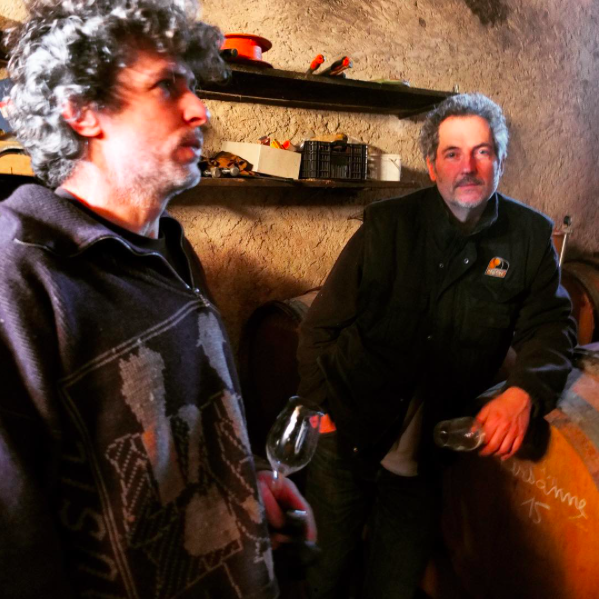The Rhone river plunges past the town of Villebois oblivious to all that surrounds it, flush from Alpine glaciers, and intent on finding the Mediterranean. There is something mesmerizing about its impassive, headlong force. The Loire is quaint in comparison; the Gironde, downright languorous. The surrounding hills rise up around it, rich in green vitality, sloping up to the southernmost escarpment of the Jura Massif, and beyond that, the Alps. From the river’s edge, there is only one patch of vineyards in sight: to the east, high up on the hill above the village, three loosely connected squares are cut out of a profusion of rock and verdure. If you try to find your way to the vines, you will inevitably stumble on Domaine du Perron, located in an unassuming garage about fifty meters from the town square. This is where François Grinand makes wine. In 1993 he left his job as a piano teacher at a prestigious conservatory to start making wine in his hometown of Villebois. Having suffered several poor harvests, Francois went bankrupt in 2007, prompting some close friends to step in and save the domaine. In 2009, the estate was reborn as Domaine du Perron.
Though often associated with Savoie, the Bugey region is situated on the Southern tip of the limestone-rich Jura massif, separated from the Alps by a narrow river valley to the East. In their natural state, the wines, too, often resemble Jura to the north and Burgundy to the West, with which Bugey is historically affiliated. Francois’ approach aims to restore this less common face of Bugey, favoring low-yielding vineyard management, hand-harvesting, and elevage-intensive cellar work. On a mere 2 hectares, he farms Pinot Noir, Gamay, Mondeuse, Altesse (aka Rousette) and Chardonnay, and has begun to buy organically farmed fruit from a small group of colleagues, most notably from a Savoie vineyard planted to Jacquere that he shares with Jean-Yves Peron. The vineyards are farmed entirely without chemicals and only occasional biodynamic treatments.
François’ Gamay and Pinot Noir are fermented whole-cluster in upright fiberglass vats. His Mondeuse, by contrast, is de-stemmed to avoid bitterness. Unlike some of his natural winemaking colleagues in the region, who prefer maceration for their aromatic white grapes, François’ whites are pressed directly without being de-stemmed. Grapes are pressed through an old upright press with a rock basin, then transferred to old oak barrels, where they age until François decides they are ready to bottle, generally 12 to 18 months. Since 2010, François bottles all of his wines without filtration or the addition of sulfur dioxide.
François talks about wine the way he might talk to one of his piano student about scales, prioritizing process and practice over whimsy and improvisation. Scales are transparently simple, but also inscrutably complex in their array of potential combinations. One does not master them through experimentation, but instead through daily practice, a repetitive labor that requires attention to detail, trusting that beauty will organically arise out of the mysterious interaction of disparate elements.

